Select a Language
The Sacred Assemblies of the Passover, the Feast of Unleavened Bread, and the Day of Resurrection 2024
The Grace of Salvation to All Humanity Without Cost
On March 24, 2024 (the 14th day of the first month in the sacred calendar), the Sacred Assembly of the Passover convened simultaneously in 7,500 Churches of God across 175 countries. The following day, the 25th, marked the Sacred Assembly of the Feast of Unleavened Bread; and on the 31st, the day after the first Sabbath following the Feast of Unleavened Bread, the Sacred Assembly of Resurrection Day took place, following the ceremonies outlined in the Bible. Members worldwide participated in these feasts, expressing gratitude to Christ, who, through His sacrifice on the cross, granted the forgiveness of sins, rose again on the third day, and bestowed upon them the living hope of resurrection.

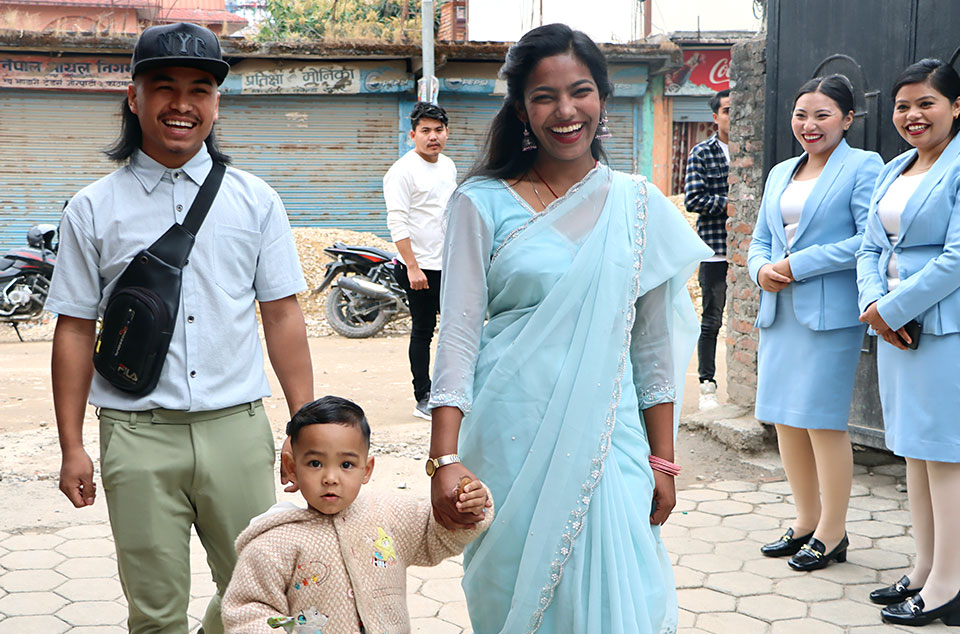
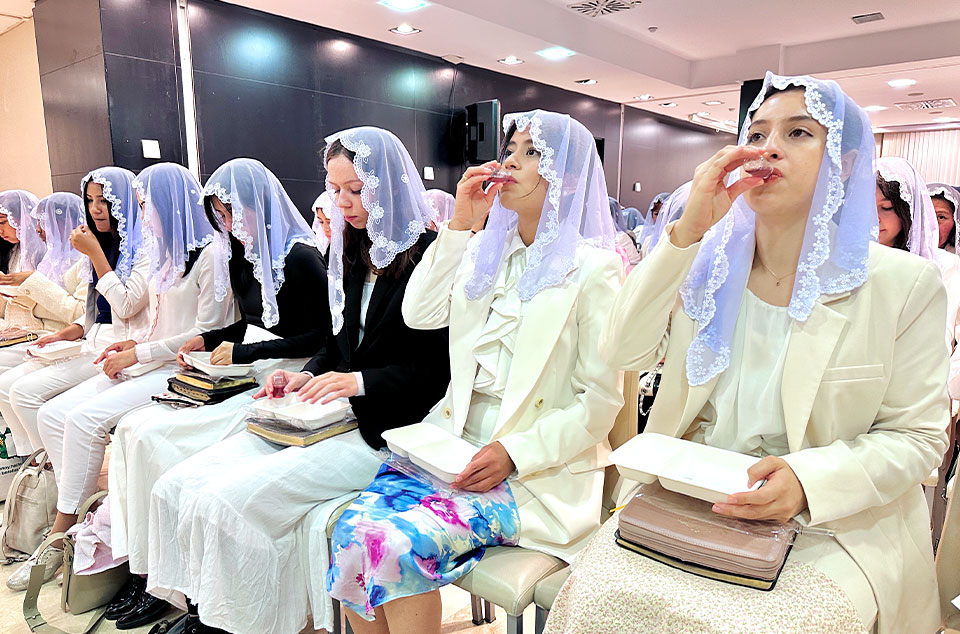

Passover: Salvation Through God’s Love
The Last Supper, a renowned masterpiece painted by the Italian artist Leonardo da Vinci over a span of approximately four years starting from 1495, is often misunderstood by many. This work actually portrays Jesus and His disciples observing the New Covenant Passover, during which Jesus promised the forgiveness of sins to humanity.
In The Last Supper, bread and wine, symbolizing Jesus’ flesh and blood, are prominently placed before Jesus and His disciples. Jesus’ proclamation, “Whoever eats my flesh and drinks my blood has eternal life,” establishes this moment as the “new covenant” (Mt 26:17–28; Lk 22:7–20; Jn 6:53-54).
During the Sacred Assembly of the Passover held at the New Jerusalem Pangyo Temple in Korea, Heavenly Mother offered a heartfelt prayer, expressing deep gratitude to Heavenly Father for paving the path of salvation through His precious blood. She acknowledged the plight of humanity, facing death due to their sins committed in heaven. Mother fervently prayed that all the children who observed the Passover established by God’s love and received the promise of eternal life, would embody God’s likeness and guide people, who are fearful of various disasters, toward salvation.
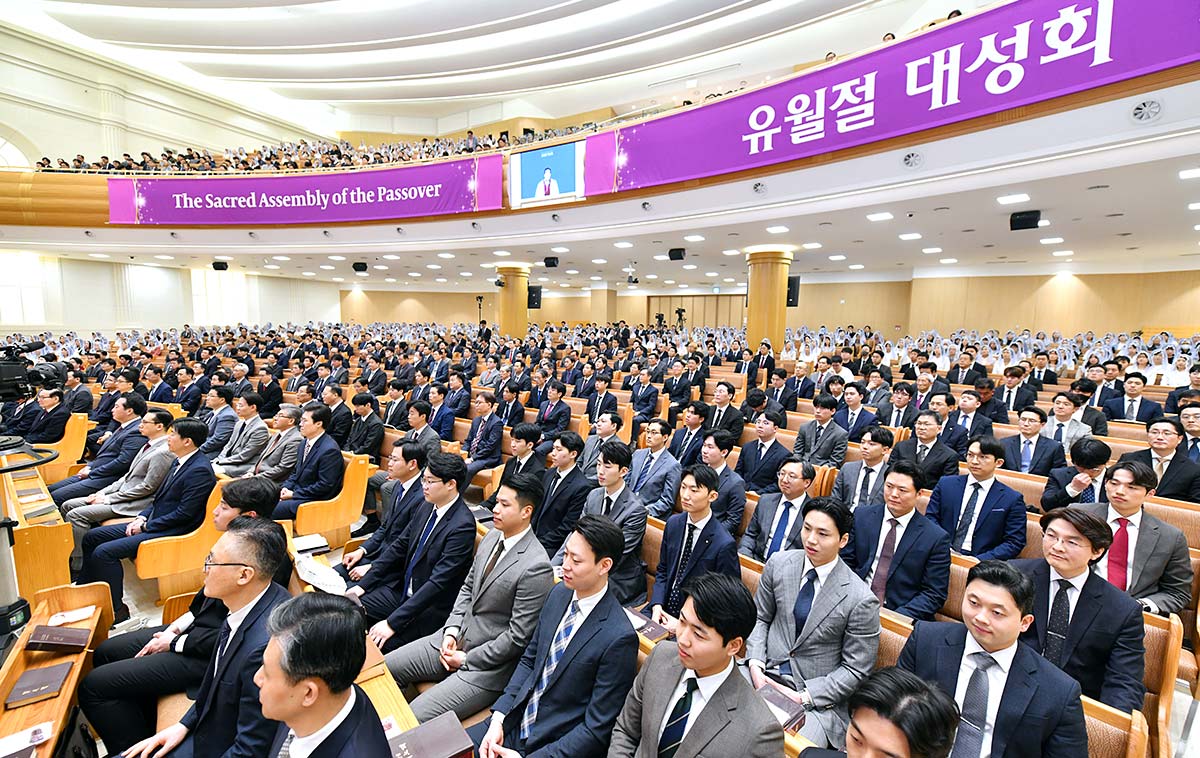

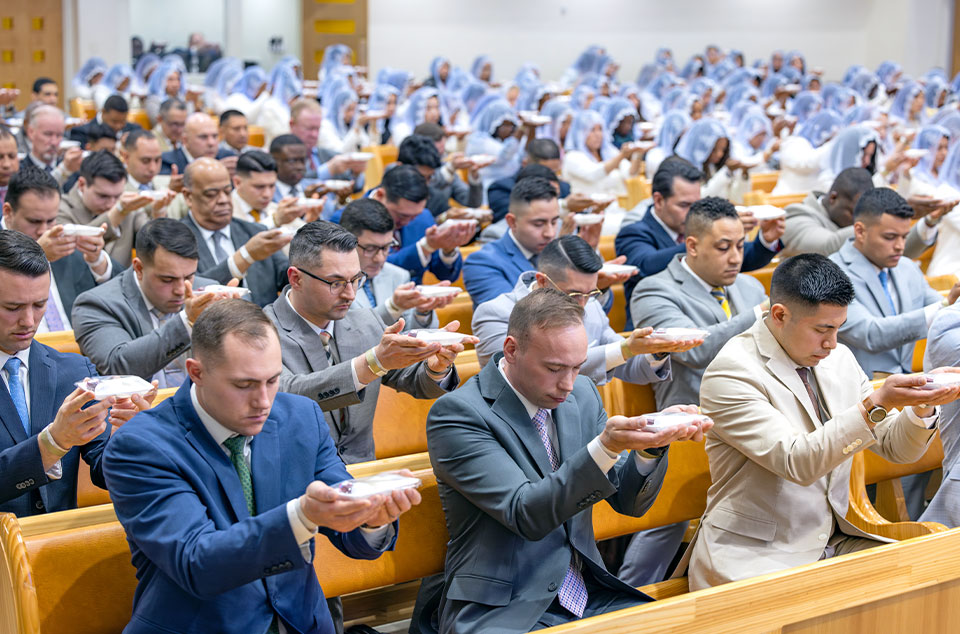


The Passover comprises the Foot-Washing Ceremony and the Holy Supper Ceremony. Following the example of Jesus, who humbly washed the feet of His disciples, the members washed each other’s feet and partook in the Holy Supper (Jn 13:3–15).
General Pastor Kim Joo-cheol underscored the significance of the Passover as a “precious legacy left by Jesus for the salvation of humanity,” emphasizing that “despite knowing the suffering He would endure on the cross, Jesus eagerly desired to keep the Passover for the salvation of His children.” He further conveyed that “the continuation of the truth established by Jesus and followed by the apostles is the path to the kingdom of heaven,” highlighting that “although the truth of the new covenant was lost after the Apostolic Age, Christ Ahnsahnghong has restored the Passover and established the Church of God in 1964.” Pastor Kim urged everyone to embrace God’s desire for the salvation of all humanity and strive to lead 8 billion people to a kingdom without sorrow, pain, or death (Mt 7:21–23; Ex 12:21–44; 13:8–10; Jos 5:10–12).
Following the partaking of the Passover bread and wine, members deeply engraved the love of Christ and the significance of the new covenant in their hearts.
Reflecting on the Suffering of the Cross
Opposite the original mural of The Last Supper, Giambattista Tiepolo’s artwork, The Crucifixion, is displayed. It portrays Jesus suffering on the cross between two robbers. The day following Jesus’ observance of the Passover, as foretold in the Bible, He sacrificed Himself on the cross to atone for the sins of humanity. This day is commemorated as the Feast of Unleavened Bread.
In commemoration of the Feast of Unleavened Bread, Mother expressed gratitude and reverence to Father, who endured immense suffering on the cross to forgive all people of their sins. She prayed fervently that all Her children would fulfill the mission of saving souls with love and sacrifice, walking in Father’s footsteps.


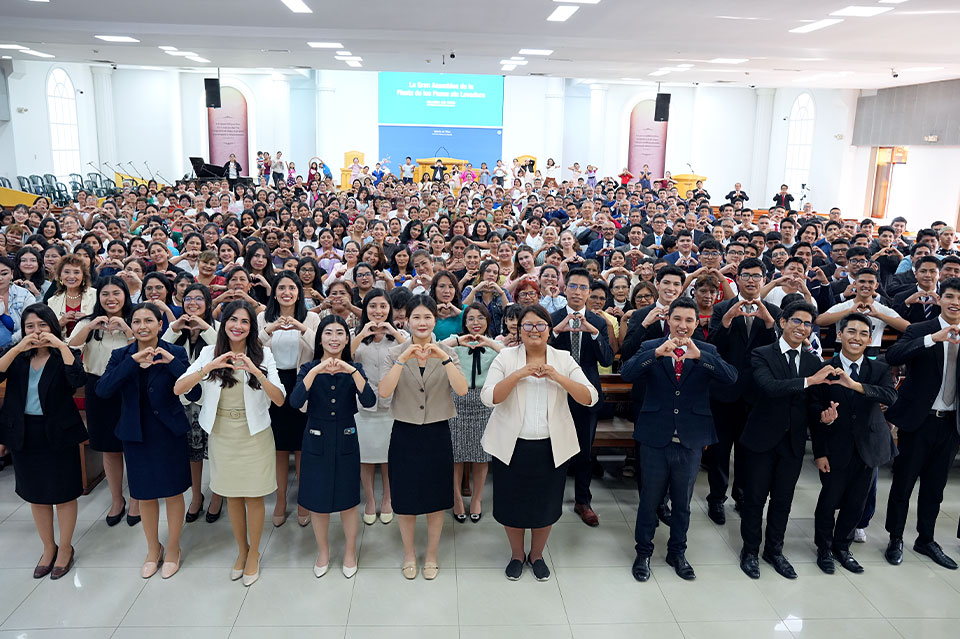
During the Feast of Unleavened Bread, General Pastor Kim Joo-cheol emphasized the significance of remembering God’s willingness to bear the cross for our salvation. He urged everyone to embrace the spirit of this feast and follow the path of the gospel, echoing the footsteps of suffering. The Bible testifies to the severe hardships endured by God in the flesh due to our sins and transgressions (Isa 53:1–12). Pastor Kim reiterated this, emphasizing the need to engrave in our hearts the sacrifice made on our behalf to endure the punishment we deserve. He called for repentance by abandoning past sins and transgressions, and sharing the love given by God with all people (Lk 15:7, 10; 1 Th 2:3–4; 2 Co 3:6).
Following Jesus’ command to fast on the day the bridegroom is taken away (Mt 9:15), members who participated in the fast on this day joined in Father’s suffering, offering vocal prayers of commitment to leading lives worthy of repentance by saving souls.
Day of Resurrection: The Resurrection and Transformation Granted to Those Keeping the New Covenant
In a world where countless lives blossom and eventually fade away, every birth ultimately leads to death. For humanity, once ignorant of the life and realm beyond death, Resurrection Day holds immense significance as a historic moment when Christ offered the promise of resurrection. The Bible assures that those who have died in Christ will rise when He returns, while the living saints will undergo a transformation into spiritual bodies to meet God (1 Th 4:14–17).
Worldwide members attended the Sacred Assembly of the Resurrection Day, filled with anticipation for the day of resurrection and transformation. Mother led prayers of gratitude to Father, who, with boundless love, bestowed upon humanity the hope of resurrection through His sacrificial love. She earnestly prayed that Her children would faithfully follow the example of Father’s love, steadfastly proclaiming the new covenant with gratitude, and would rise to live.

General Pastor Kim Joo-cheol underscored, “The early Church saints, who witnessed Jesus’s resurrection, boldly preached the gospel despite oppression, joyfully believing in their own resurrection even in death. Let us have faith in the blessings and promises of resurrection, transforming into beautiful angels, and remain steadfast in God until the end. May we diligently spread the gospel, opening the spiritual eyes of all to receive the true God and share in the joy together” (1 Pe 1:3–4; 1 Co 15:12–19, 42–44).
Following the afternoon worship, Mother bestowed blessings upon members who faithfully observed the feasts. She encouraged them to rejoice and express gratitude by awakening many who are unaware of the glory of resurrection and transformation, so that they could live a life filled with joy and gratitude together, embracing the hope of resurrection and the blessings of heaven.

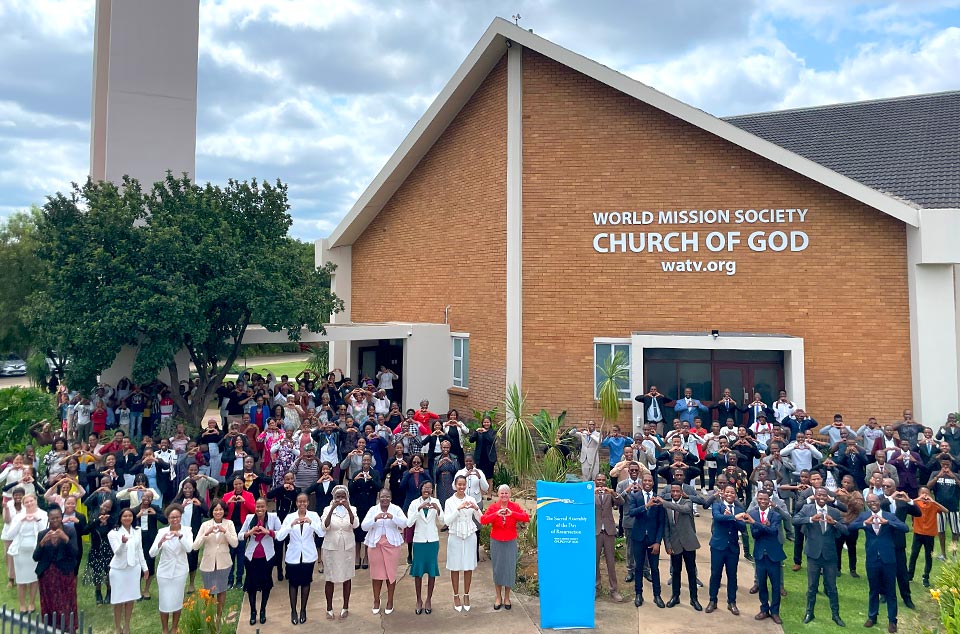
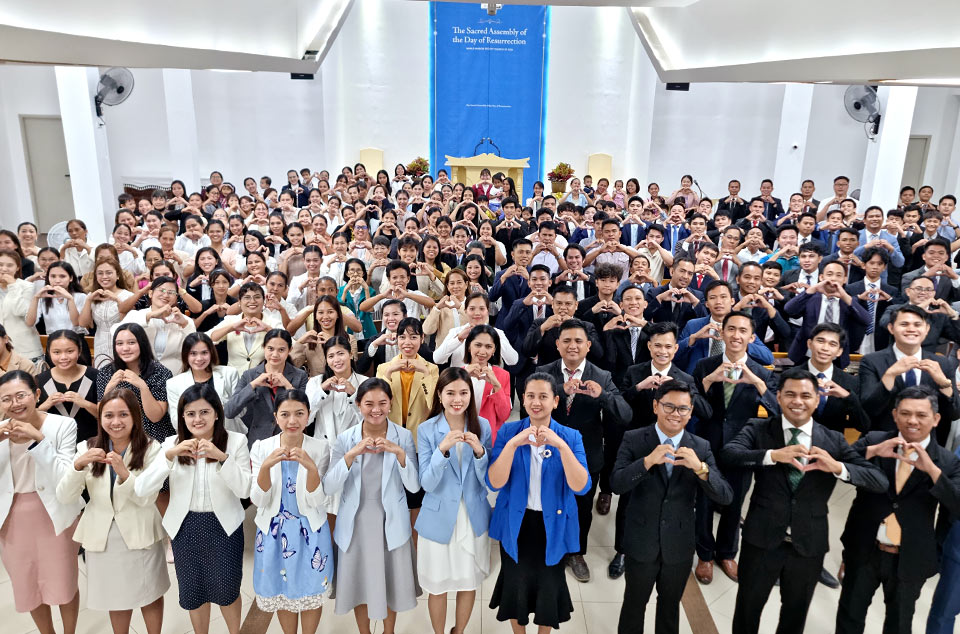
 ㅁ
ㅁ

On this day, the members partook in the breaking of the Resurrection Day bread. This tradition stems from the account of Jesus, resurrected 2,000 years ago, who blessed and offered bread to disciples who initially did not recognize Him, thereby opening their spiritual eyes (Lk 24:13~31). Inspired by the blessings received during the feasts, the members resolved to boldly proclaim the truth of salvation in Samaria and to the ends of the earth, emulating the fervent faith of the early Church saints, who fearlessly spread the message of salvation.
- The seven feasts in three times, including the Passover, did not suddenly appear in the time of Jesus. Each feast originated from the work of Moses in the Old Testament times, and represents the work of Jesus. It is deeply imbued with the love and sacrifice of Christ who wanted the salvation of mankind.
- Passover
- The Passover, which signifies “a feast through which disasters pass over,” was initially observed during the time of the Exodus (Ex 12:1–37). The Israelites, spared from calamity and liberated from slavery in Egypt through the observance of the Passover, also commemorated it at the conclusion of their 40-year journey in the desert. Following the observance of the Passover, they triumphantly conquered the first city of Jericho in the land of Canaan, marking their entry into the Promised Land. The Passover was manifested before significant events in God’s history occurred; for instance, during the reign of King Hezekiah, the Israelites were shielded from Assyrian invasion through the observance of the Passover.
- Feast of Unleavened Bread
- The Israelites, fleeing from the pursuing Egyptian army, faced numerous hardships until they crossed the Red Sea (Ex 14:1–31). In remembrance of this event, God instituted the Feast of Unleavened Bread. In the Old Testament, this feast was observed by eating bread without yeast. The suffering endured by the Israelites, which gave rise to the Feast of Unleavened Bread, symbolizes the pain that Jesus would undergo from the night He observed the Passover with His disciples to His crucifixion.
- Day of Resurrection
- The Israelites, who left Egypt, suffered hardships until they crossed the Red Sea while being pursued by the Egyptian army. This represents the historical event of Jesus Christ’s suffering on the cross, His burial, and subsequent resurrection. In the Old Testament, the Feast of Firstfruits (Day of Resurrection) was observed on the first Sunday after the Feast of Unleavened Bread, during which a sheaf of the first grain was waved before God as an offering (Lev 23:1–2, 10–14).
- Three days after His death, Jesus was resurrected as the firstfruits of those who had fallen asleep, at dawn on the day after the Sabbath. Furthermore, saints who had previously died were raised from the dead and entered the holy city (1 Co 15:20; Mt 27:50–53).